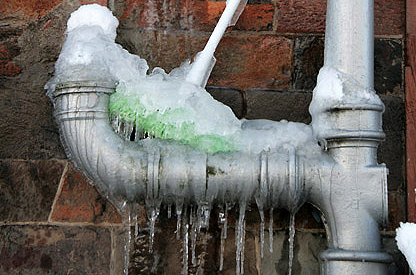Tips to Maintain Pipes from Cold Weather Damage: Essential Advice
Tips to Maintain Pipes from Cold Weather Damage: Essential Advice
Blog Article
How do you actually feel on the subject of How to prepare your home plumbing for winter weather?

Cold weather can damage your pipes, particularly by freezing pipes. Right here's just how to stop it from happening and what to do if it does.
Intro
As temperatures drop, the threat of frozen pipelines boosts, potentially bring about costly repairs and water damages. Understanding exactly how to prevent frozen pipes is important for homeowners in cool climates.
Understanding Icy Pipelines
What triggers pipes to ice up?
Pipes ice up when revealed to temperature levels listed below 32 ° F (0 ° C) for prolonged periods. As water inside the pipes ices up, it increases, taxing the pipe walls and potentially causing them to burst.
Threats and problems
Frozen pipelines can lead to supply of water interruptions, building damages, and costly repair work. Burst pipelines can flooding homes and create considerable architectural damages.
Signs of Frozen Pipeline
Identifying frozen pipelines early can avoid them from bursting.
Just how to recognize icy pipes
Search for reduced water flow from faucets, uncommon odors or noises from pipes, and noticeable frost on subjected pipes.
Prevention Tips
Insulating at risk pipes
Wrap pipes in insulation sleeves or utilize warm tape to safeguard them from freezing temperature levels. Concentrate on pipes in unheated or external areas of the home.
Home heating techniques
Keep indoor rooms appropriately heated up, specifically areas with plumbing. Open cabinet doors to allow warm air to distribute around pipes under sinks.
Securing Outside Plumbing
Garden hose pipes and outside faucets
Detach and drain garden hose pipes before wintertime. Mount frost-proof faucets or cover outside faucets with shielded caps.
What to Do If Your Pipelines Freeze
Immediate actions to take
If you suspect frozen pipelines, keep faucets available to soothe pressure as the ice melts. Make use of a hairdryer or towels taken in hot water to thaw pipelines slowly.
Long-Term Solutions
Structural changes
Consider rerouting pipelines far from exterior wall surfaces or unheated areas. Include additional insulation to attic rooms, basements, and crawl spaces.
Updating insulation
Purchase top quality insulation for pipelines, attics, and wall surfaces. Proper insulation assists keep regular temperatures and minimizes the risk of frozen pipelines.
Verdict
Stopping icy pipelines needs positive procedures and fast responses. By understanding the reasons, indications, and safety nets, home owners can secure their plumbing throughout winter.
5 Ways to Prevent Frozen Pipes
Drain Outdoor Faucets and Disconnect Hoses
First, close the shut-off valve that controls the flow of water in the pipe to your outdoor faucet. Then, head outside to disconnect and drain your hose and open the outdoor faucet to allow the water to completely drain out of the line. Turn off the faucet when done. Finally, head back to the shut-off valve and drain the remaining water inside the pipe into a bucket or container. Additionally, if you have a home irrigation system, you should consider hiring an expert to clear the system of water each year.
Insulate Pipes
One of the best and most cost-effective methods for preventing frozen water pipes is to wrap your pipes with insulation. This is especially important for areas in your home that aren’t exposed to heat, such as an attic. We suggest using foam sleeves, which can typically be found at your local hardware store.
Keep Heat Running at 65
Your pipes are located inside your walls, and the temperature there is much colder than the rest of the house. To prevent your pipes from freezing, The Insurance Information Institute suggests that you keep your home heated to at least 65 degrees, even when traveling. You may want to invest in smart devices that can keep an eye on the temperature in your home while you’re away.
Leave Water Dripping
Moving water — even a small trickle — can prevent ice from forming inside your pipes. When freezing temps are imminent, start a drip of water from all faucets that serve exposed pipes. Leaving a few faucets running will also help relieve pressure inside the pipes and help prevent a rupture if the water inside freezes.
Open Cupboard Doors
Warm your kitchen and bathroom pipes by opening cupboards and vanities. You should also leave your interior doors ajar to help warm air circulate evenly throughout your home.

Hopefully you liked our post on Preventing and dealing with frozen pipes. Thank you for taking the time to read our blog. Sharing is nice. Helping people is fun. I praise you for being here. Come back soon.
Schedule A Service Call Report this page